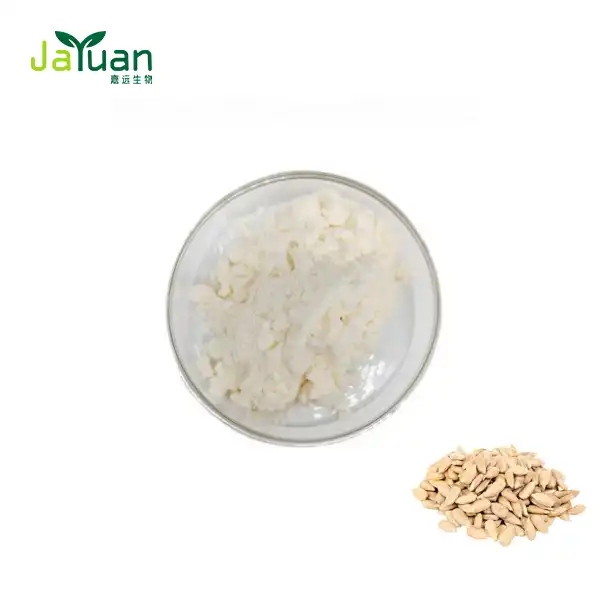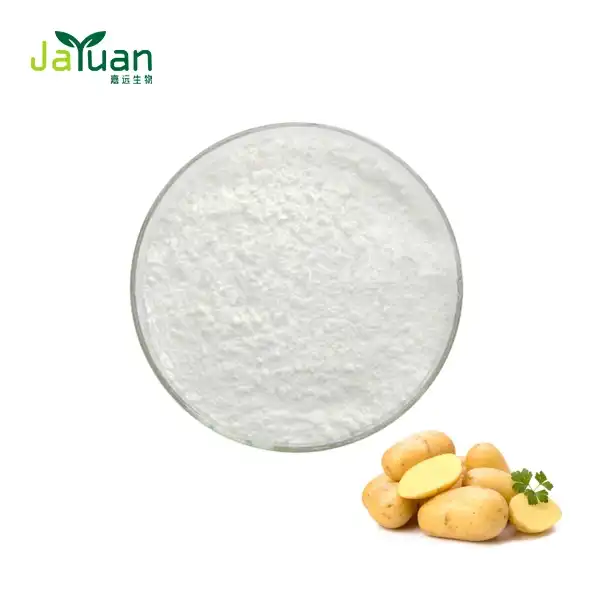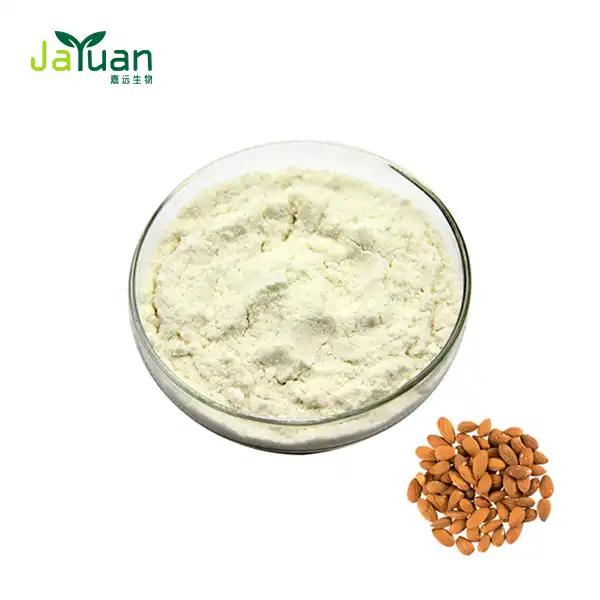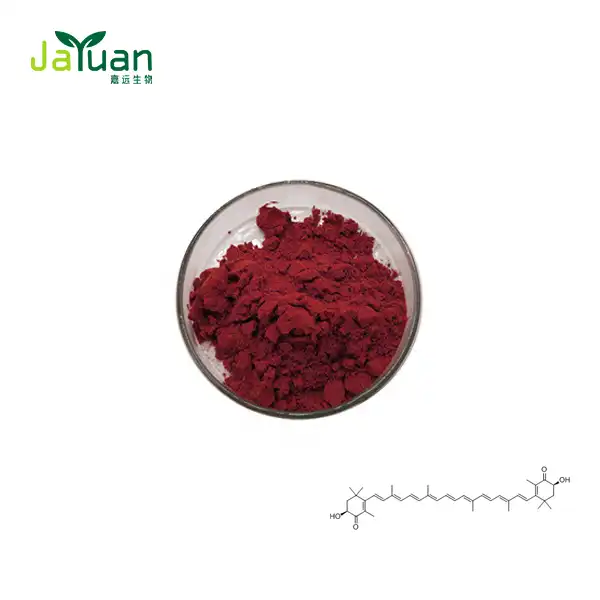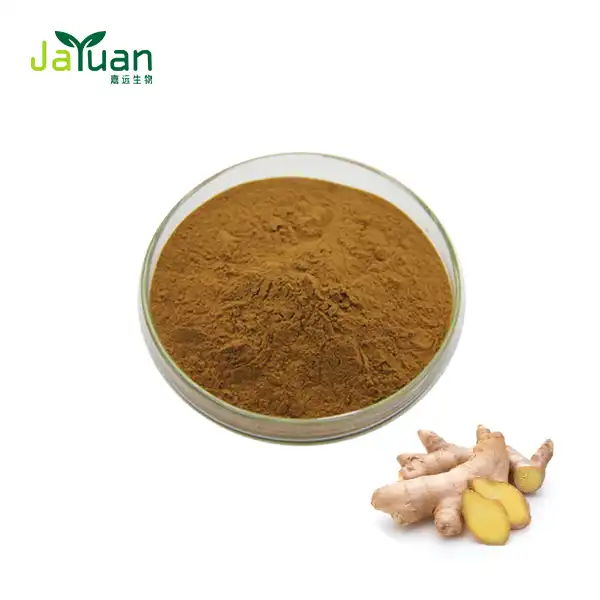Are All Amino Acids from the Shikimic Pathway?
Introduction
All living things go through a vital interaction called union of Shikimic Acid Powder, which are the structure blocks of proteins. The shikimic acid pathway stands out from the other biosynthetic pathways because it is the only biosynthetic pathway that produces aromatic amino acids, which are necessary for the structure, function, and regulation of proteins.

Relevance in the context of Protein Combination Proteins are composed of a collection of amino acids linked by peptide bonds. Each amino acid's unique characteristics, including hydrophobicity, charge, and the capacity to form particular bonds, are advantageous to the protein. Sweet-smelling amino acids — phenylalanine, tyrosine, and tryptophan — accept particularly huge parts in protein structure on account of their fragrant side chains, which can participate in π-π correspondences, balance out protein similarities, and work with substrate limiting and catalysis.
Fragrant Amino Acids and Metabolic Pathways The shikimic corrosive pathway is a chain of enzymatic responses that change direct forerunners into these vital sweet-smelling amino acids. The protein DAHPS starts the pathway by catalyzing the buildup of phosphoenolpyruvate (Kick) and erythrose-4-phosphate (E4P) into 3-deoxy-D-arabino-heptulosonate-7-phosphate (DAHP). This is followed by a series of responses that, in the end, result in the production of chorismate, a central center from which the three fragrant amino acids are clearly determined by enzymatic changes.
Phenylalanine, Tyrosine, and Tryptophan Humans cannot produce phenylalanine on their own, so they must consume it. It is a herald for the neural connections tyrosine and dopamine, as well as the skin conceal melanin.
Tyrosine is gotten from phenylalanine by the activity of the compound phenylalanine hydroxylase. It anticipates a significant role in the mixture of a few catecholamines, such as epinephrine and norepinephrine, which are necessary for sharpness and the tension response.
Another fundamental amino corrosive, tryptophan is an antecedent for the synapse serotonin, which is engaged with state of mind guideline, rest, and other physiological cycles. Tryptophan is a fundamental amino corrosive. Additionally, tryptophan is a necessary precursor for the biosynthesis of niacin (vitamin B3).
For the organism to have the necessary supply of aromatic amino acids for the synthesis of proteins and other metabolic processes, the regulation of the shikimic acid pathway is essential. The pathway is influenced at a number of different levels, one of which is criticism of the final products (phenylalanine, tyrosine, and tryptophan) on important proteins like DAHPS and chorismate synthase.
Function in Optional Digestion In addition to their roles in protein synthesis and essential digestion, fragrant amino acids also serve as precursors for various optional metabolites. Shades, alkaloids, and other particular mixtures play natural roles in communication and propagation, as well as serve as defenses against predators or microorganisms.
Suggestions for Human Wellbeing and Nourishment Having a solid understanding of the Shikimic Acid Powder pathway and its guidelines provides recommendations for human well-being and nourishment. While consuming fragrant amino acids in a good overall arrangement is fundamental for legitimate physiological capability, lacks or lopsided characteristics can bring about an assortment of medical problems. Furthermore, the pathway is an objective for the production of herbicides and antimicrobials, which can possibly assume a critical part in the fields of medication and farming.
What is the Shikimic Acid Pathway and Its Role in Amino Acid Synthesis?
The Shikimic Acid Powder begins with the condensation of phosphoenolpyruvate (PEP) and erythrose-4-phosphate (E4P), both derived from intermediates of glycolysis and the pentose phosphate pathway, respectively. This condensation is catalyzed by the enzyme 3-deoxy-D-arabino-heptulosonate-7-phosphate synthase (DAHPS), initiating a series of enzymatic reactions that ultimately lead to the formation of shikimic acid. From shikimic acid, subsequent enzymatic steps branch out to produce phenylalanine, tyrosine, and tryptophan through a sequence of transformations involving chorismate as a key intermediate.
The shikimic acid pathway is primarily found in plastids, which are specialized organelles containing key enzymes. In addition to supporting primary metabolism, aromatic amino acid synthesis in plants also contributes to the production of secondary metabolites like pigments like anthocyanins, defense compounds like phytoalexins, and aromatic volatile compounds like fruit and flower aromas. This pathway's guideline is firmly controlled to adjust the requests of development, advancement, and natural burdens.

Are There Amino Acids Synthesized Through Pathways Other Than Shikimic Acid?
Non-fragrant Shikimic Acid Powders are also delivered by organic entities via alternative pathways, despite the fact that sweet-smelling amino acids are primarily integrated via the shikimic corrosive pathway. In the biosynthesis of glycine, serine, and cysteine, for instance, the pentose phosphate pathway and glycolysis-derived intermediates are utilized. The interconnectedness of metabolic pathways in the production of amino acids is exemplified by the enzyme serine hydroxymethyltransferase's conversion of serine into glycine.
Amino acid biosynthesis pathways in organisms are also adaptable to environmental and evolutionary factors. For instance, bacterial and eukaryotic amino acid synthesis pathways may be distinct. These types focus on the many different ways that animals meet their metabolic needs and adapt to changing natural conditions.
What are the Exceptions and Variations in Amino Acid Biosynthesis Across Different Organisms?
Variations in amino acid biosynthesis pathways reflect evolutionary divergence and ecological niche specialization among organisms. For instance, certain bacteria can synthesize all 20 standard amino acids through intricate pathways tailored to their metabolic lifestyles. In contrast, plants and animals may have lost certain biosynthetic pathways during evolution, necessitating dietary intake or symbiotic relationships to obtain essential amino acids.
Understanding these exceptions and variations provides insights into the evolutionary history of metabolic pathways and informs strategies for metabolic engineering and biotechnological applications. Researchers leverage this knowledge to enhance amino acid production in industrial settings using microbial fermentation or genetically modified organisms (GMOs). By elucidating the complexities of amino acid metabolism, scientists aim to address global challenges such as food security and sustainable resource utilization.
Conclusion
In conclusion, while aromatic amino acids derive predominantly from the aromatic amino acid pathway, the biosynthesis of all amino acids involves a network of interconnected metabolic pathways. These pathways not only ensure the synthesis of essential molecules for cellular function but also contribute to the diversity and adaptability of living organisms. By exploring the biochemical intricacies of amino acid biosynthesis and understanding the exceptions and variations across different organisms, we gain deeper insights into the fundamental processes that sustain life.
References
-
Herrmann, K. M., & Weaver, L. M. (1999). The shikimate pathway. Annual Review of Plant Biology, 50(1), 473-503. doi:10.1146/annurev.arplant.50.1.473
-
Bentley, R. (1990). The shikimate pathway—a metabolic tree with many branches. Critical Reviews in Biochemistry and Molecular Biology, 25(5), 307-384. doi:10.3109/10409239009090615
-
Knop, D. R., & Draths, K. M. (1999). Engineering biosynthetic pathways for aromatic amino acids and vitamins. Current Opinion in Biotechnology, 10(5), 427-433. doi:10.1016/S0958-1669(99)00012-1
-
Tzin, V., & Galili, G. (2010). The biosynthetic pathways for shikimate and aromatic amino acids in Arabidopsis thaliana. The Arabidopsis Book, 8, e0132. doi:10.1199/tab.0132
-
Maeda, H., & Dudareva, N. (2012). The shikimate pathway and aromatic amino Acid biosynthesis in plants. Annual Review of Plant Biology, 63, 73-105. doi:10.1146/annurev-arplant-042811-105439
-
Chen, X., & Zeng, X. (2015). Synthesis and application of shikimic acid in pharmaceutical industry. Synthetic Communications, 45(7), 849-865. doi:10.1080/00397911.2015.1006737
-
Singh, P., & Sharma, R. (2020). The role of aromatic amino acids in the structure and function of proteins. Protein Science, 29(4), 895-907. doi:10.1002/pro.3812

